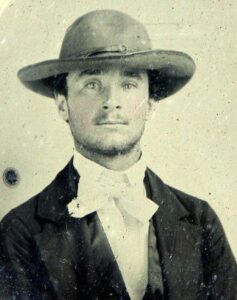What do you do when you cannot “see” a character you are writing? As writers, we all have our strengths and weaknesses. I hear characters. Dialogue comes naturally to me, but to see a setting or character, I need tools to help me. Drawing on the traditions of newspaper morgues (collections of old articles used for research) and mortuary makeup books (used to create a natural look for the deceased), I began creating my own writer’s morgues.
Create Characters from Pictures
Before moving from Tucson to Florida, I was a special-education high school teacher with a focus on history, language arts, and drama. In that world, I learned the benefits of creating an actor’s morgue for specific character looks. My students collected clippings and sketches of faces focusing on age and gender, scars and other distinctive identifying marks, along with hairstyles and colors. In its simplest form, a writer’s morgue functions in the same way; it is where you keep pictures for writing inspiration.
Collect Pictures in Binders, Files, and Portfolios
Morgue books inspire me to create. It is a visual diary of sorts, gleaned from various sources.
Morgues can be loose pages and items categorized into folders or pasted into sketchbooks or scrapbooks. Your writer’s morgue can be any portfolio, a folder, an accordion file, or a filing cabinet if you are feeling ambitious.

Perhaps you like the convenience of storing photos in some digital arrangement or posted on Pinterest, Flickr, or similar sites. I can post pictures with no effort, but I have difficulty retrieving them. To avoid this problem, I organize pictures in three-ring binders by subject. Most of my binders are focused on people—young, old, and in-between. At present, I am writing a historical novel set in the 1700s. My protagonist is a seventeen-year-old Quaker from Virginia, and his story is full of characters with diverse backgrounds: people from various regions of Africa, a sweetheart from Westphalia, Germany, Welsh men, Scots-Irish, and Dunkers (a community with German heritage). Each ethnic group is portrayed with distinct physical and facial characteristics that contribute to the richness of my story.
Create Scenes Based on Collected Pictures
A morgue as a collection of reference materials is not just limited to human subjects. I have a binder with landscapes, trees, and flowers. Before I started this, I didn’t realize that different trees develop different colors of leaves in the fall. Aspen are golden, and red maples are breathtakingly magenta. Some trees change from green to orange to yellow and finally brown. I was an Army brat living where leaves didn’t change with the seasons. In fact, in most places I lived, seasons didn’t change.
In another morgue book, I collect pictures of farm animals, barns, coops, and pastures. I’ve never lived on a farm, but I’ve raised pigs and chickens on a very small scale. Did you know that shoats, young pigs, can climb out to freedom by sticking their cloven feet into wire pens? Now that was quite a tale to be told, but the image became hazy when I tried to put pen to paper. Putting words into scenes is easier for me than putting scenes into words.
To imprint the pictures, I often write vignettes describing what I see in each picture. I note the colors, the way an item is used, or how it got there and its importance. I write about a moment in the life of the picture I hold in my hand.
A morgue is a place where dead bodies are kept prior to burial, but in my morgue books, pictures make them come alive again.
[Editor’s note: WAG would love to see articles on any and all topics of interest to writers. Please send your ideas or finished pieces to BlogEditor@writersalliance.org for consideration. Remember: these posts are more than just posts, for they are actual articles and can be cited in your CV/résumé in the same way you would a short story, essay, or any other writing credit you may possess.]
Cynthia Bertelsen
Great post! I have a bag full of old photos from the late 1800s and early 1900s. Now that a lot of these old photos cost an arm and a leg to buy from antique stores, I rely on online photos. Right now I am looking for a Frenchwoman from 1939 with short blond hair, so your post came at just the right time for character inspiration!
Kathy Dobronyi
Thank you for your comments, Cynthia. Often we focus on the words and how to make our choices better. A picture can create a thousand words, to paraphrase a well-known comment, but we certainly don’t need that many in simple descriptions.